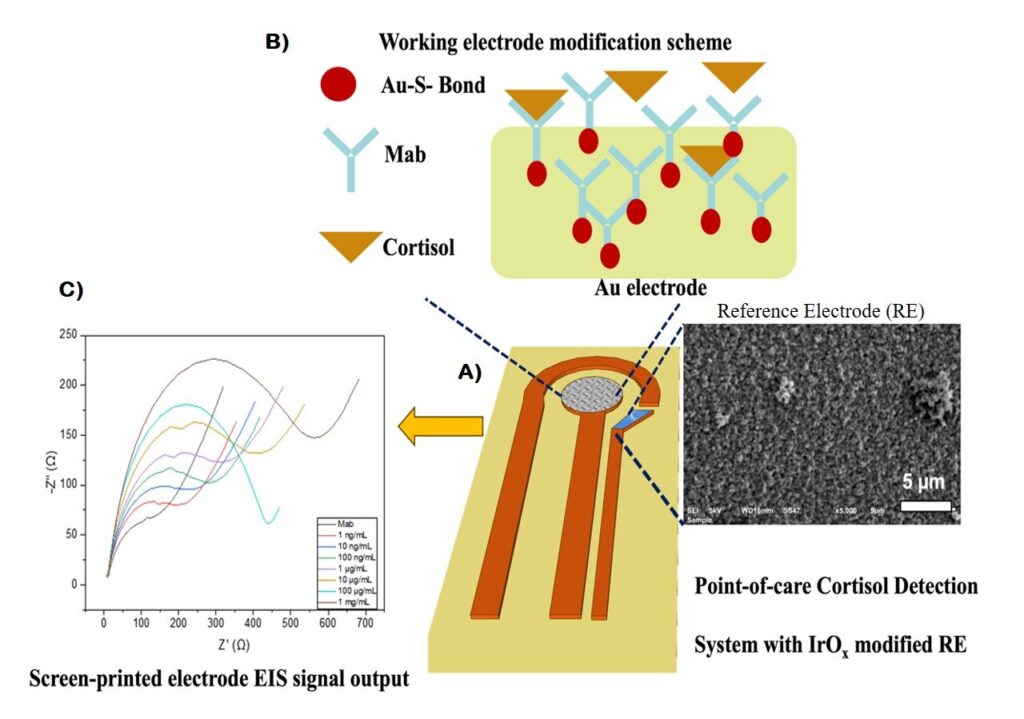Stress takes various shapes in our daily lives, from relentless work demands to the constant rush of the school run. But ignoring high stress levels can lead to serious health issues like depression and Alzheimer’s disease. So what if checking your stress levels at home became the norm? Thanks to nanoparticles, this possibility is drawing closer.
In a new study published in the journal Talanta, a team from China and the U.K. have produced a new and improved detector that can accurately measure levels of cortisol—a stress biomarker in the blood.
Tong Ji, a current part-time Ph.D. student and a senior technician at Xi’an Jiaotong-Liverpool University (XJTLU), China, is the first author of the study. She says, “A cost-effective, easily reproducible, and easy-to-use point-of-care testing device that accurately measures cortisol levels has long been sought.
“It could make a huge difference to an appropriate and speedy diagnosis of high cortisol levels, drastically improving people’s lives.”
The devices currently available generally contain electrodes that have poor stability in different and fluctuating conditions, such as changing pH and temperature. This gives the devices a short shelf life and makes them difficult to produce commercially.
“Current cortisol detectors have reference electrodes with a silver layer that is easily oxidized and unstable in electrochemical measurements,” says Ji.
“In this study, we used iridium oxide nanoparticles to cover the silver layer. This modification improves the stability, sensitivity and reproducibility of cortisol detection in point-of-care devices.”
Dr. Qiuchen Dong, an assistant professor at XJTLU and corresponding author, adds, “This is the first time iridium oxide has been used in this way.
“Our team have produced a simple, low-cost cortisol measuring device that detects cortisol molecules at a concentration 3,000 times lower than the normal range of cortisol in our blood. This makes our device sensitive enough for commercial use.”
The iridium oxide-modified electrodes have also improved the selectivity of testing. Dr. Graham Dawson, XJTLU Associate Professor and co-author, says, “One problem with the current solutions is that there is much similarity between cortisol and other hormones such as progesterone, testosterone, and corticosterone. This means it is difficult for the detectors to tell them apart.
“Our iridium oxide-modified electrode is selective enough to distinguish the different hormones and helps to solve this issue.”


